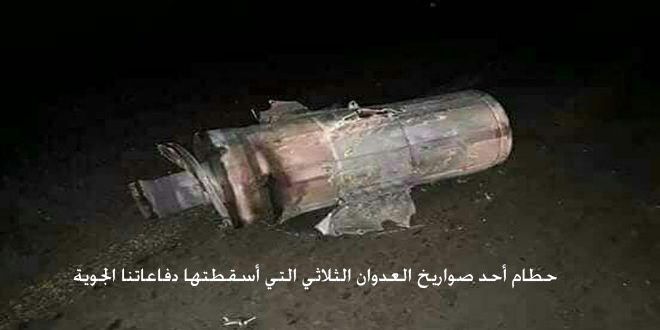CONDANNATI GLI EX VERTICI DEL ROS MARIO MORI, SUBRANNI E DE DONNO, L’EX SENATORE DELL’UTRI, MASSIMO CIANCIMINO E I BOSS BAGARELLA E CINÀ
PRESCRITTE LE ACCUSE NEI CONFRONTI DEL PENTITO GIOVANNI BRUSCA
Gli ex vertici del Ros Mario Mori e Antonio Subranni sono stati condannati a 12 anni per minaccia a corpo politico dello Stato. A 12 anni, per lo stesso reato, è stato condannato l’ex senatore di Forza Italia Marcello Dell’Utri, a 28 anni sempre per minaccia a corpo politico dello Stato, è stato condannato il capo mafia Leoluca Bagarella. Per lo stesso reato dovrà scontare 12 anni il boss Antonino Cinà.
L’ex ufficiale del Ros Giuseppe De Donno, per le stesse imputazioni, ha avuto 8 anni. Massimo Ciancimino, accusato in concorso in associazione mafiosa e calunnia dell’ex capo della polizia De Gennaro, ha avuto 8 anni.
La Corte ha assolto dall’accusa di falsa testimonianza l’ex ministro democristiano Nicola Mancino. I pm avevano chiesto per lui una condanna a sei anni di carcere. Prescritte le accuse nei confronti del pentito Giovanni Brusca.
Mancino: finita la mia sofferenza
«Sono sollevato. È finita la mia sofferenza anche se sono sempre stato convinto che a Palermo ci fosse un giudice. La sentenza è la conferma che sono stato vittima di un teorema che doveva mortificare lo Stato e un suo uomo che tale è stato ed è tuttora» ha commentato l’ex ministro Mancino.
Pm: sentenza dedicata a Borsellino
«Questo processo e questa sentenza sono dedicati a Paolo Borsellino, a Giovanni Falcone e a tutte le vittime innocenti della mafia» ha detto Vittorio Teresi, il Pm del pool che ha istruito il processo , dopo la lettura del dispositivo.
«È stata confermata - ha aggiunto - la tesi principale dell’accusa che riguardava l’ignobile ricatto fatto dalla Mafia allo Stato a cui si sono piegati pezzi delle istituzioni». «È un processo - ha concluso - che andava fatto ad ogni costo».
“LA TRATTATIVA STATO-MAFIA CI FU”
LA SENTENZA DELLA CORTE D'ASSISE DI PALERMO DICE A CHIARE LETTERE CHE LA STRATEGIA MAFIOSA DI ATTACCO ALLO STATO, INIZIATA CON L'OMICIDIO DI SALVO LIMA E CON LE STRAGI DEL '92, FU VINCENTE
DELL'UTRI "TRATTÒ" DAL '93 IN POI, AL POSTO DEL ROS: A GENNAIO DEL '94 FALLÌ L'ATTENTATO DELLO STADIO OLIMPICO CONTRO I CARABINIERI, A MARZO "FORZA ITALIA" VINSE LE ELEZIONI. E TUTTO SI ACQUIETÒ...
Riccardo Arena per “la Stampa”
La storia entra dalla porta principale dell' aula bunker di Pagliarelli: alle 16, dopo 4 giorni e mezzo (e quasi 5 anni di udienze) di camera di consiglio, la corte d' assise del processo Trattativa esce con una sentenza che in pochi si aspettavano.
A parte Nicola Mancino, l' unico che non rispondeva degli accordi inconfessabili nel periodo delle stragi del '92-'93 e che viene assolto dall' accusa di falsa testimonianza, tutti gli imputati vengono condannati.
Una batosta: 12 anni ai generali dei carabinieri del Ros Mario Mori e Antonio Subranni, per avere stretto le intese con i boss, 28 anni a Leoluca Bagarella (la Procura ne aveva chiesti 16), 12 all' altro mafioso Nino Cinà, altrettanti a Marcello Dell' Utri, che garantì - lo dice il dispositivo, con sufficiente chiarezza, lo rilancia il pm Nino Di Matteo - il necessario tramite tra i capimafia che ricattavano lo Stato e il governo Berlusconi. E poi 8 anni al colonnello Giuseppe De Donno e a Massimo Ciancimino, superteste in apparenza smentito su tutta la linea ma - in attesa delle motivazioni - in gran parte creduto dai giudici. Per il pentito Giovanni Brusca scatta la prescrizione.
Difese sotto choc, preannunciato l' appello. La posizione processuale di Mancino era relativamente marginale, ma aveva pesato tantissimo nella vicenda. Perché c' erano le sue telefonate intercettate con il consigliere giuridico del Quirinale, Loris D'Ambrosio, morto d' infarto a 62 anni, nell' estate del 2012, col dolore e l'irritazione del Colle. E c'erano le conversazioni (registrate dalla Dia) ancora dell'ex ministro dell' Interno con lo stesso Napolitano, distrutte senza essere depositate (e dunque pubblicate), ma solo dopo il ricorso del Capo dello Stato e su ordine della Corte costituzionale.
Decisione dura quella del collegio presieduto da Alfredo Montalto, il magistrato che, da Gip, aveva arrestato per concorso esterno il decimo imputato di questa vicenda, Calogero Mannino, tenendolo in carcere (nel 1995) sebbene avesse perso 40 chili e affermando che era una sua scelta, nutrirsi solo di verdure. Mannino, processato a parte, in abbreviato, per la trattativa, era stato assolto dal Gup Marina Petruzzella, nel 2015.
Sentenza che va in controtendenza rispetto ad assoluzioni nei grandi processi di Palermo - Andreotti, salvato in gran parte dalla prescrizione, lo stesso Mannino dall' accusa di mafia, il generale Mori, processato due volte e sempre uscito pulito - e perché dice a chiare lettere che la strategia mafiosa di attacco allo Stato, iniziata dopo la conferma in Cassazione delle condanne del maxiprocesso, con l' omicidio di Salvo Lima e con le stragi del '92, fu vincente.
I boss trovarono infatti sponde negli uomini dello Stato, che assecondarono le richieste di attenuazione del carcere duro, di una legislazione restrittiva contro i pentiti e i sequestri di beni. I mafiosi così continuarono: morti Giovanni Falcone e Paolo Borsellino, i grandi nemici di Cosa nostra, catturato, dal Capitano Ultimo e dal Ros di Mori e Subranni, Totò Riina - in circostanze misteriose, seguite da un' inspiegabile perquisizione del covo fatta solo dopo 18 giorni - gli eccidi proseguirono, stavolta in Continente, tra maggio e luglio '93, a Roma, Firenze e Milano.
E a novembre di quello stesso anno il guardasigilli dell' epoca, Giovanni Conso, non aveva rinnovato o prorogato 330 decreti di sottoposizione al 41 bis. La sentenza rimette poi in gioco il ruolo di Forza Italia, partito fondato, con Silvio Berlusconi, proprio da Dell' Utri, che sta già scontando 7 anni per concorso in associazione mafiosa. Dell' Utri "trattò" dal '93 in poi, al posto del Ros: a gennaio del '94 fallì l'attentato dello stadio Olimpico contro i carabinieri, a marzo dello stesso anno il partito azzurro vinse le elezioni. E tutto si acquietò.
Fonte: qui
























